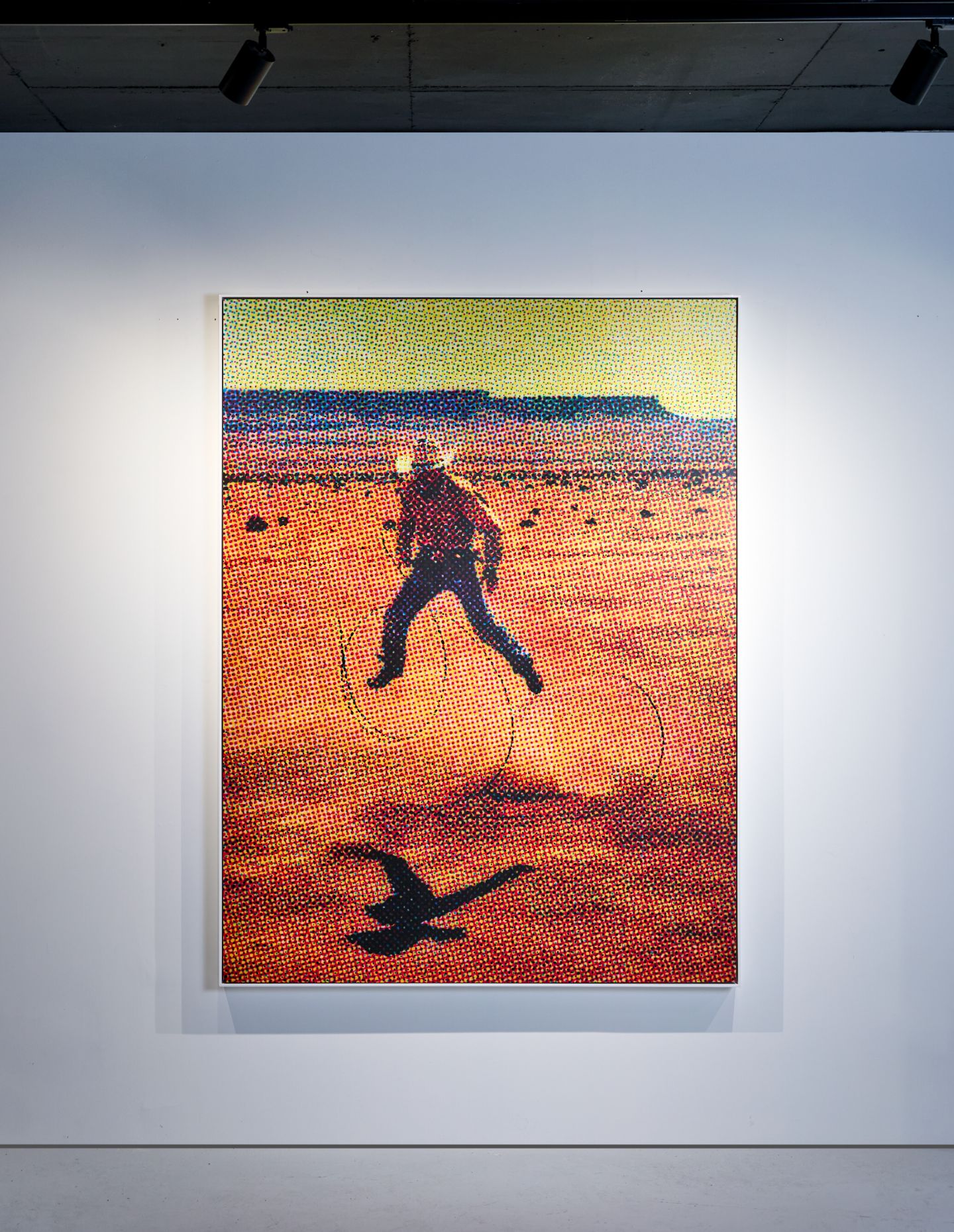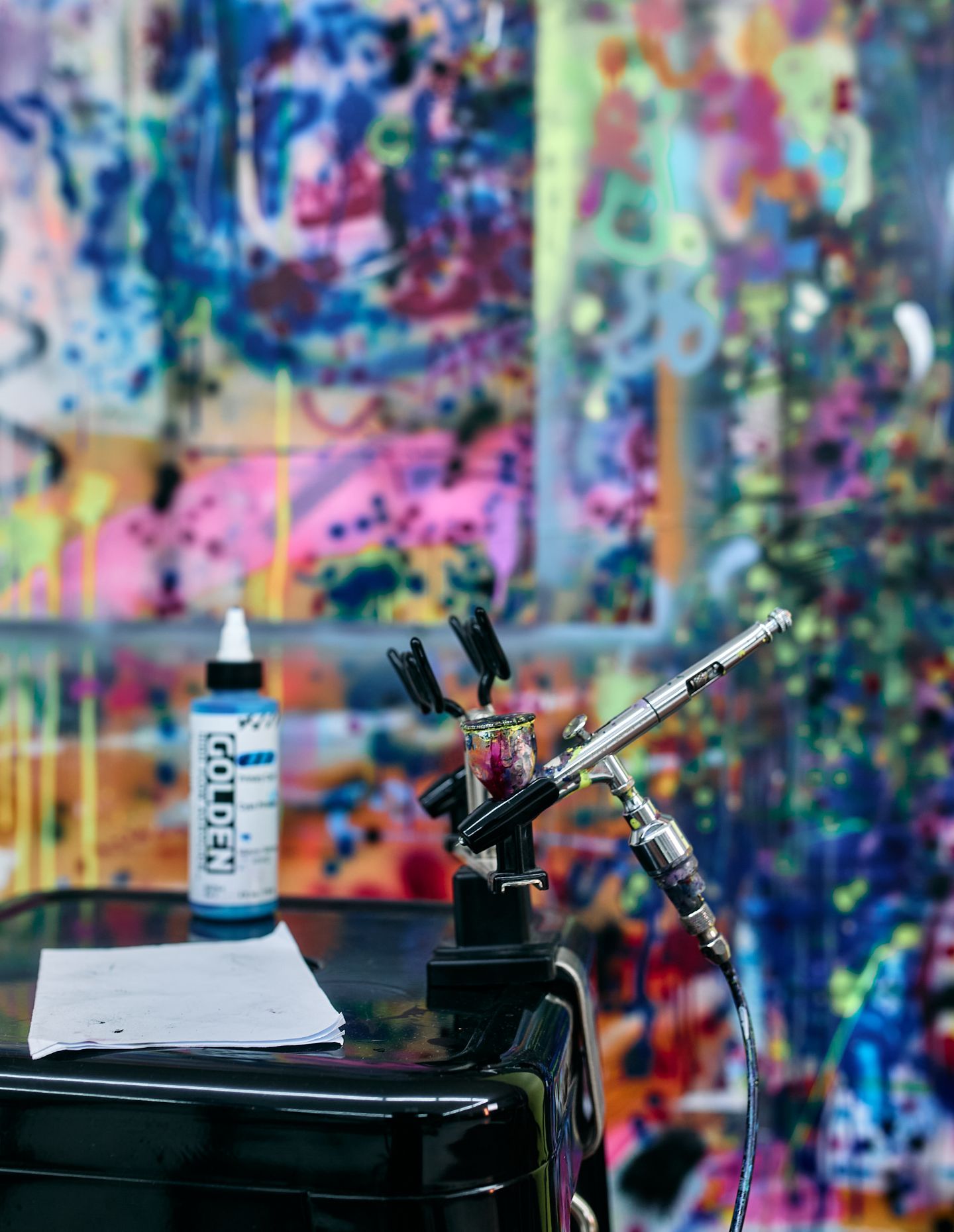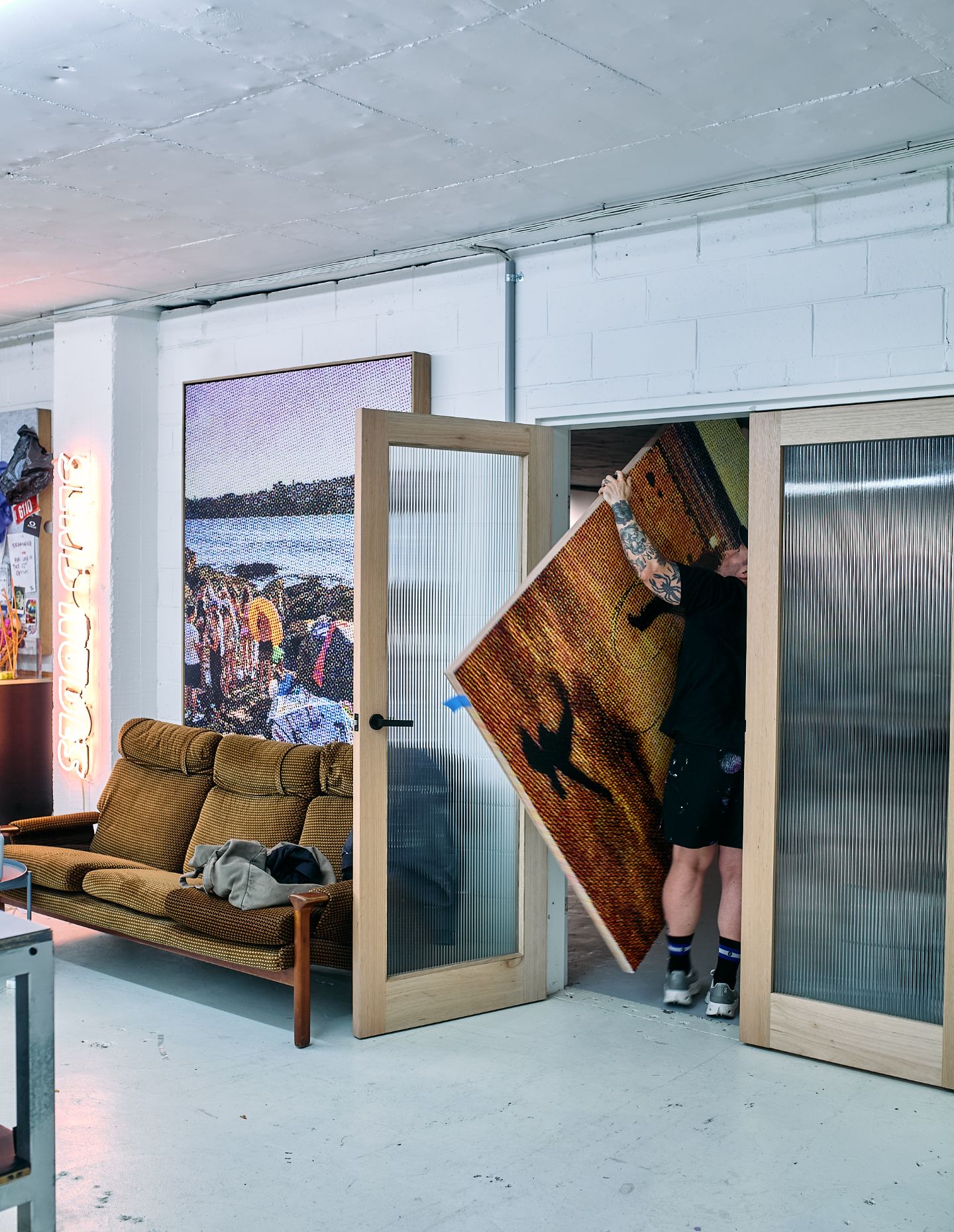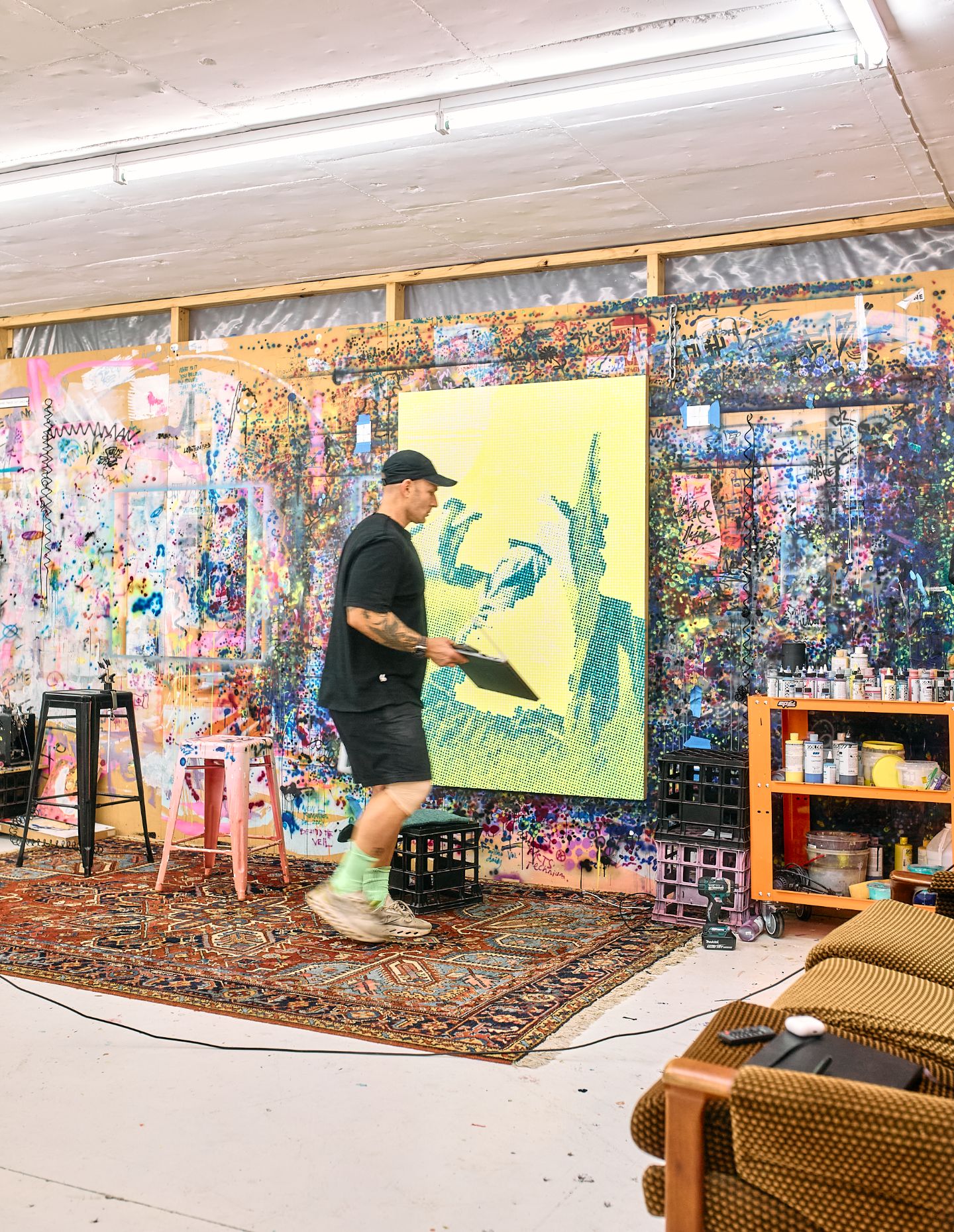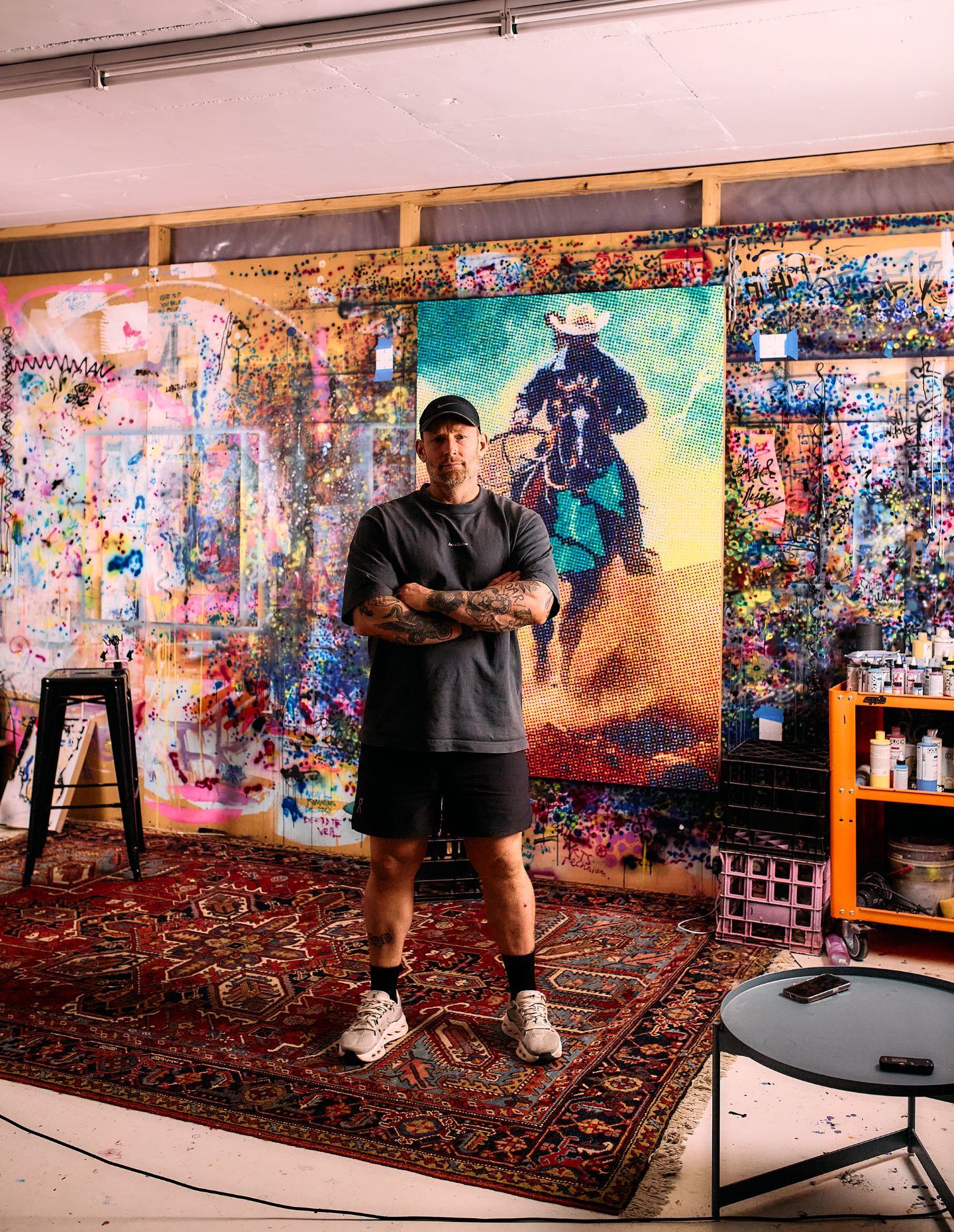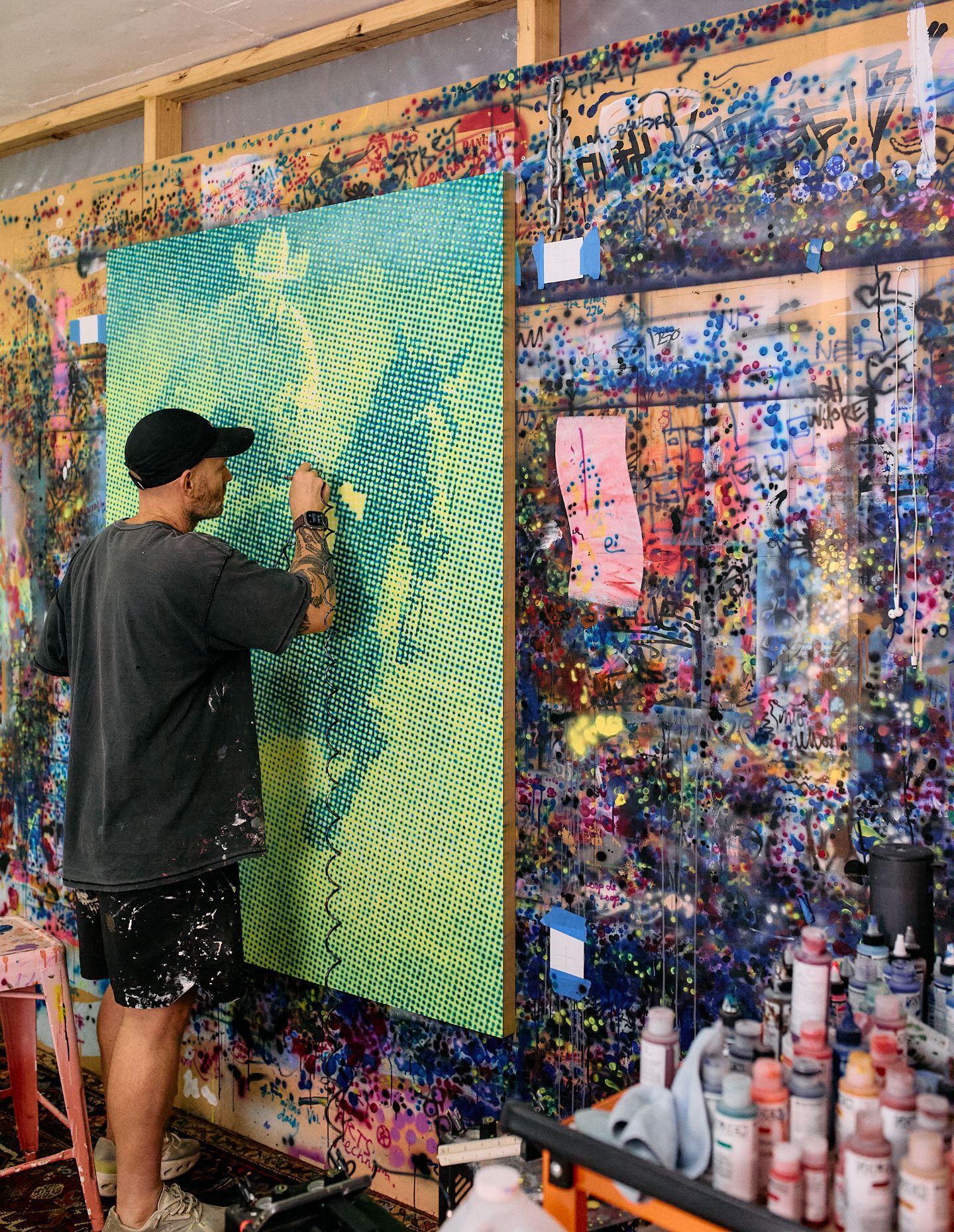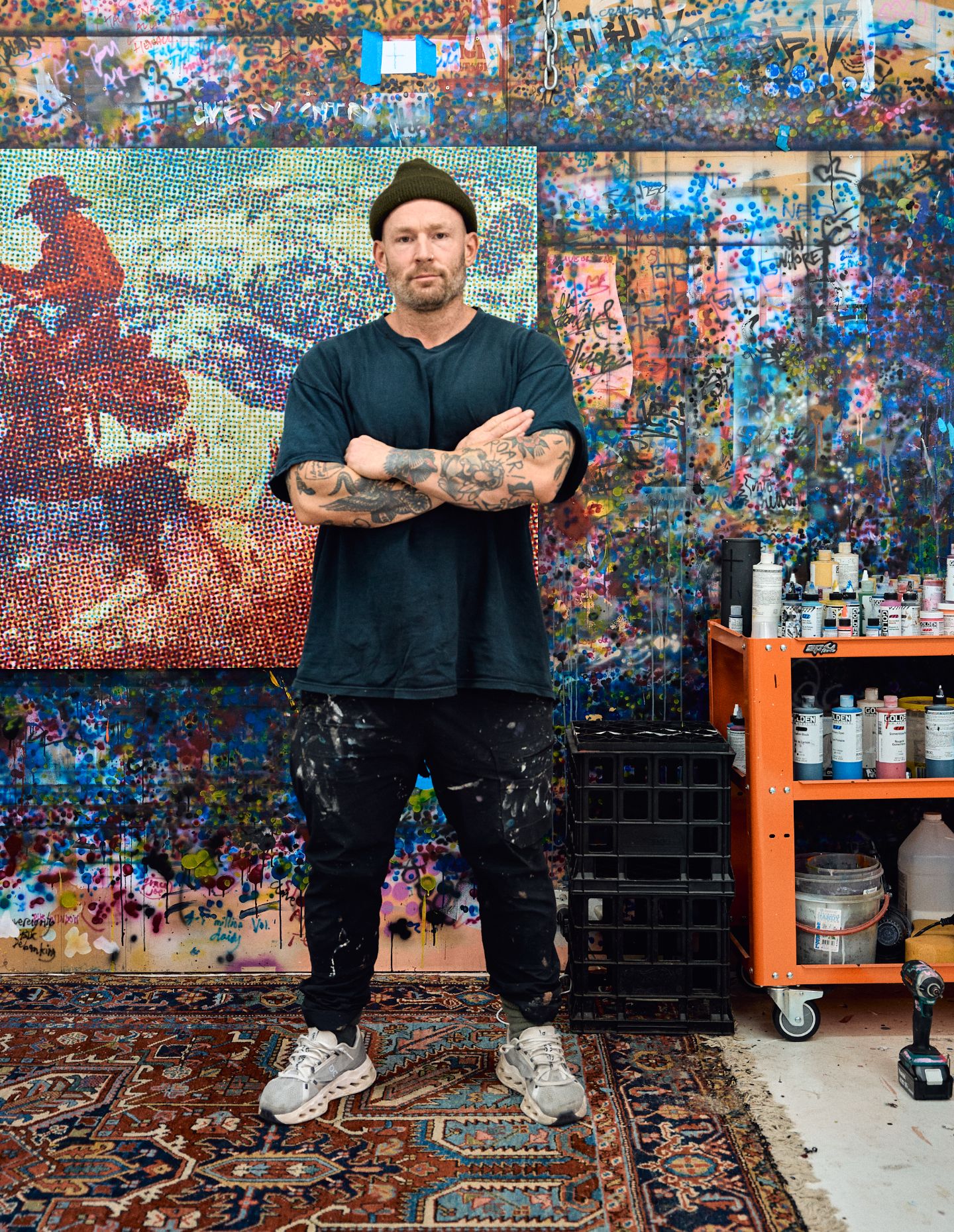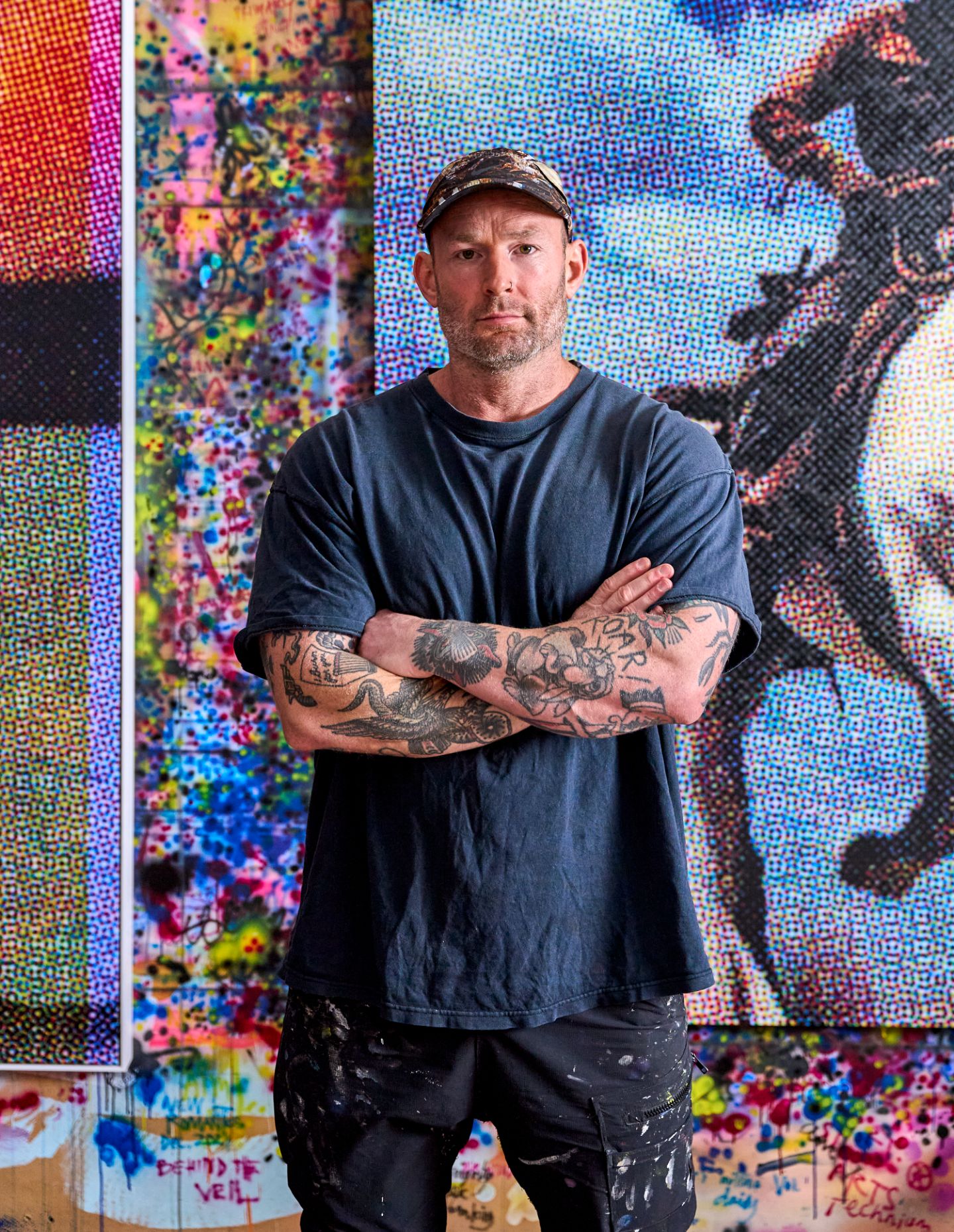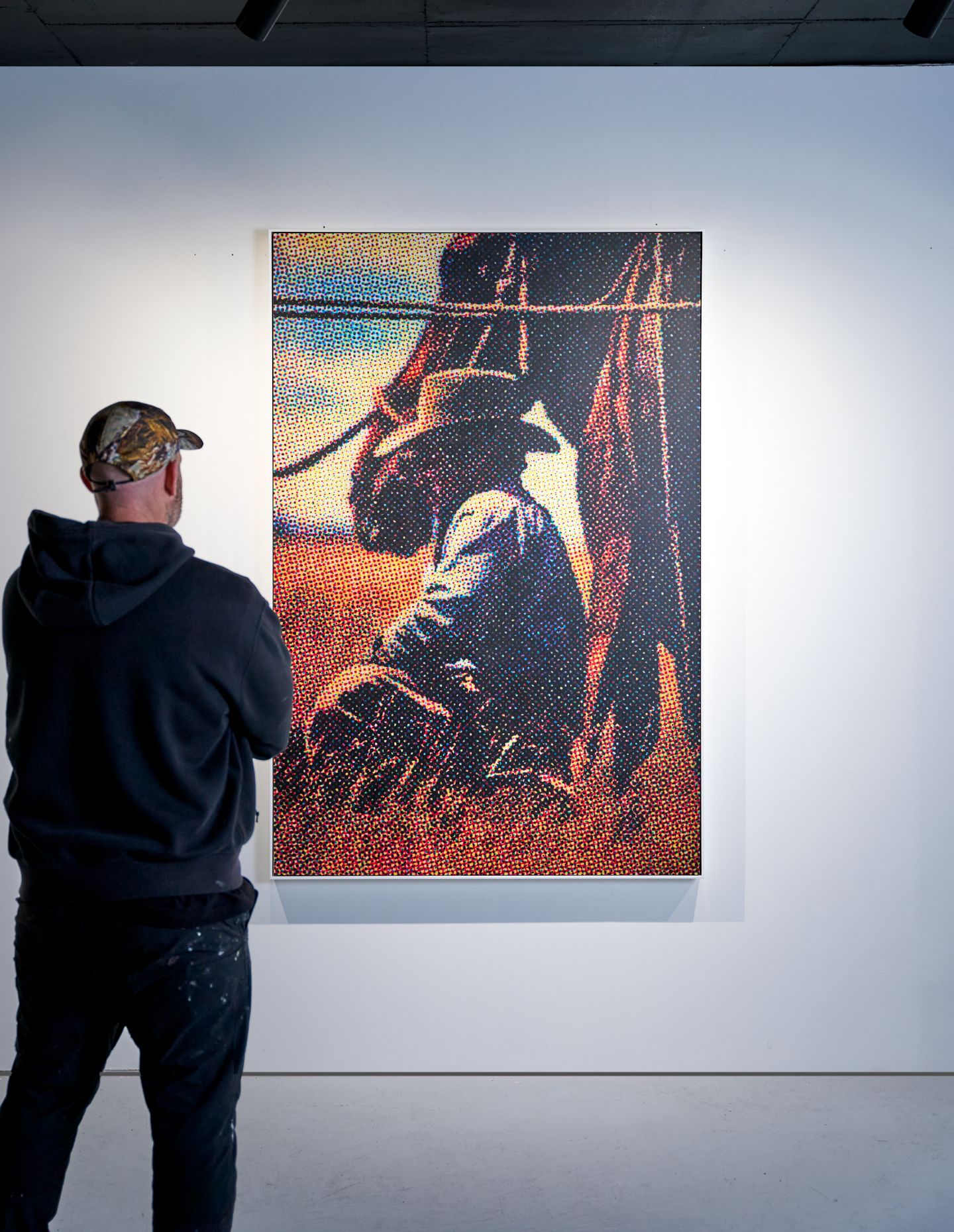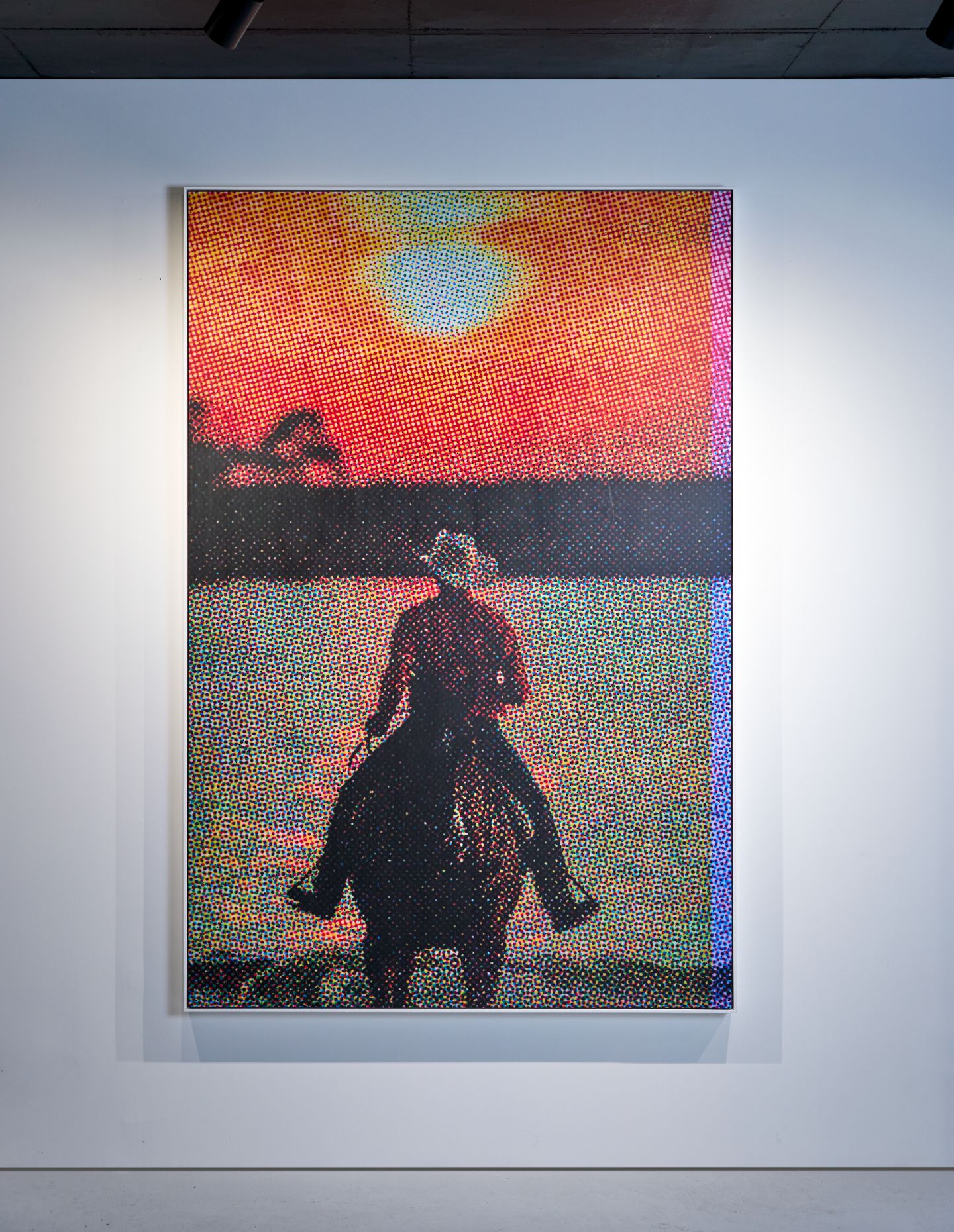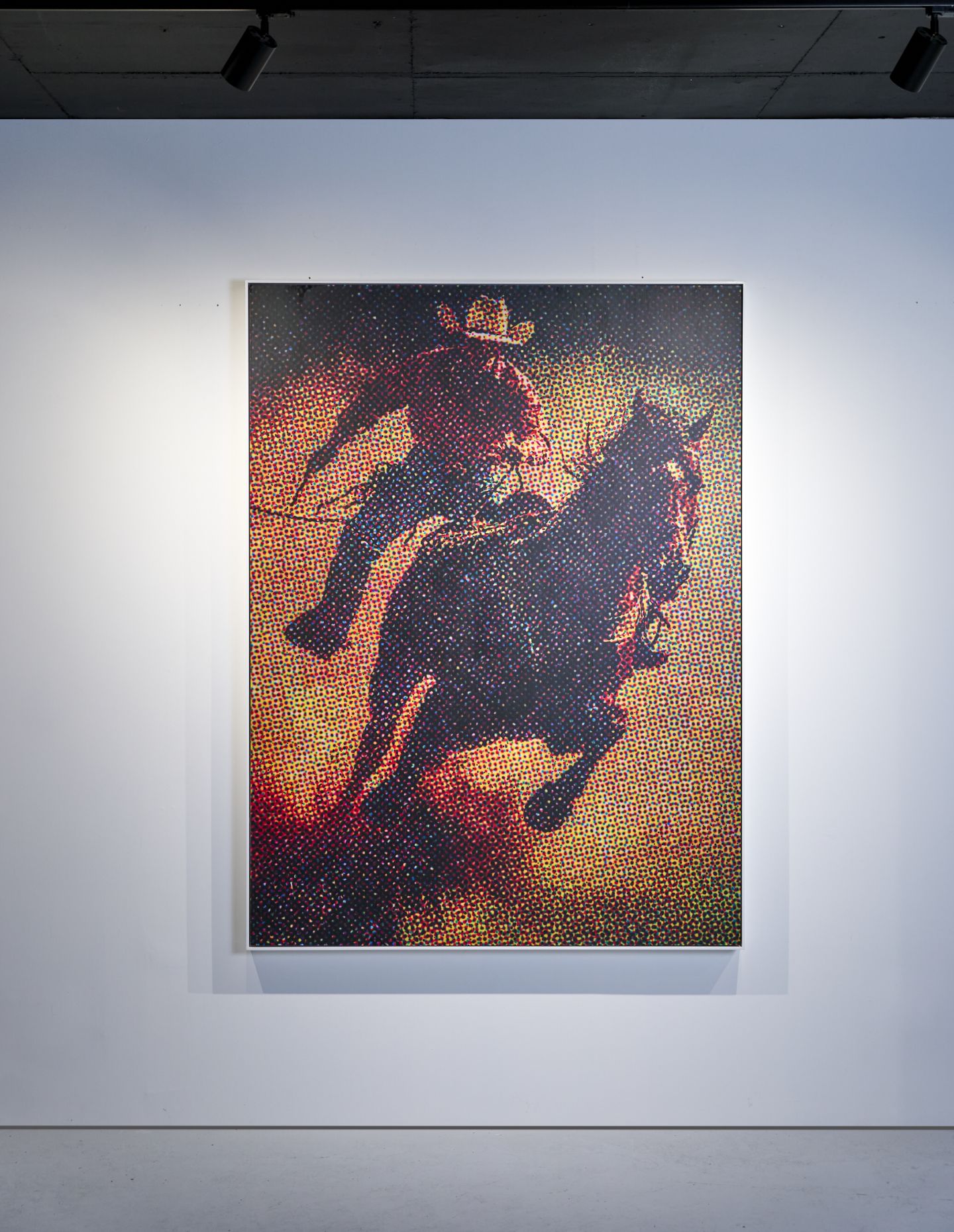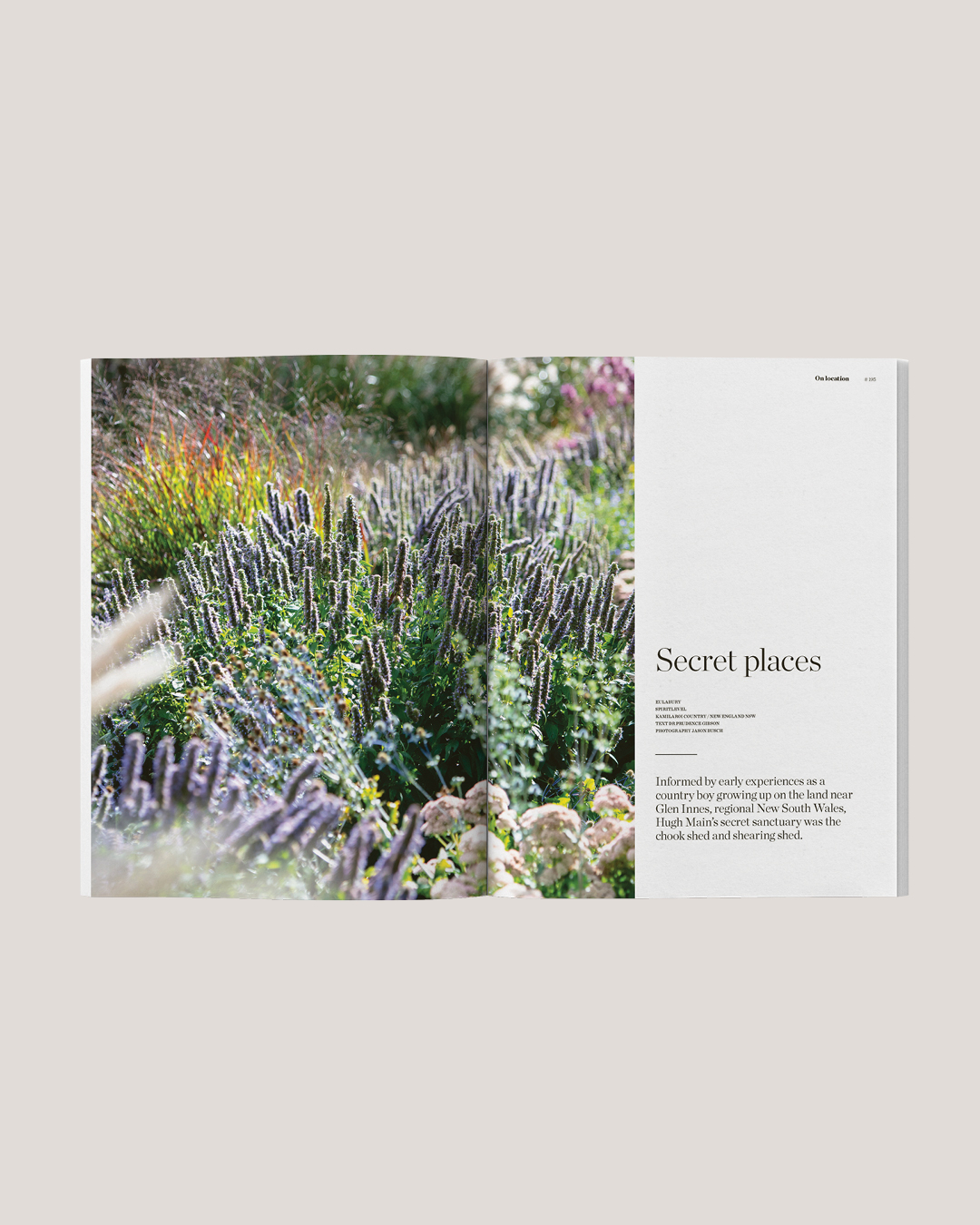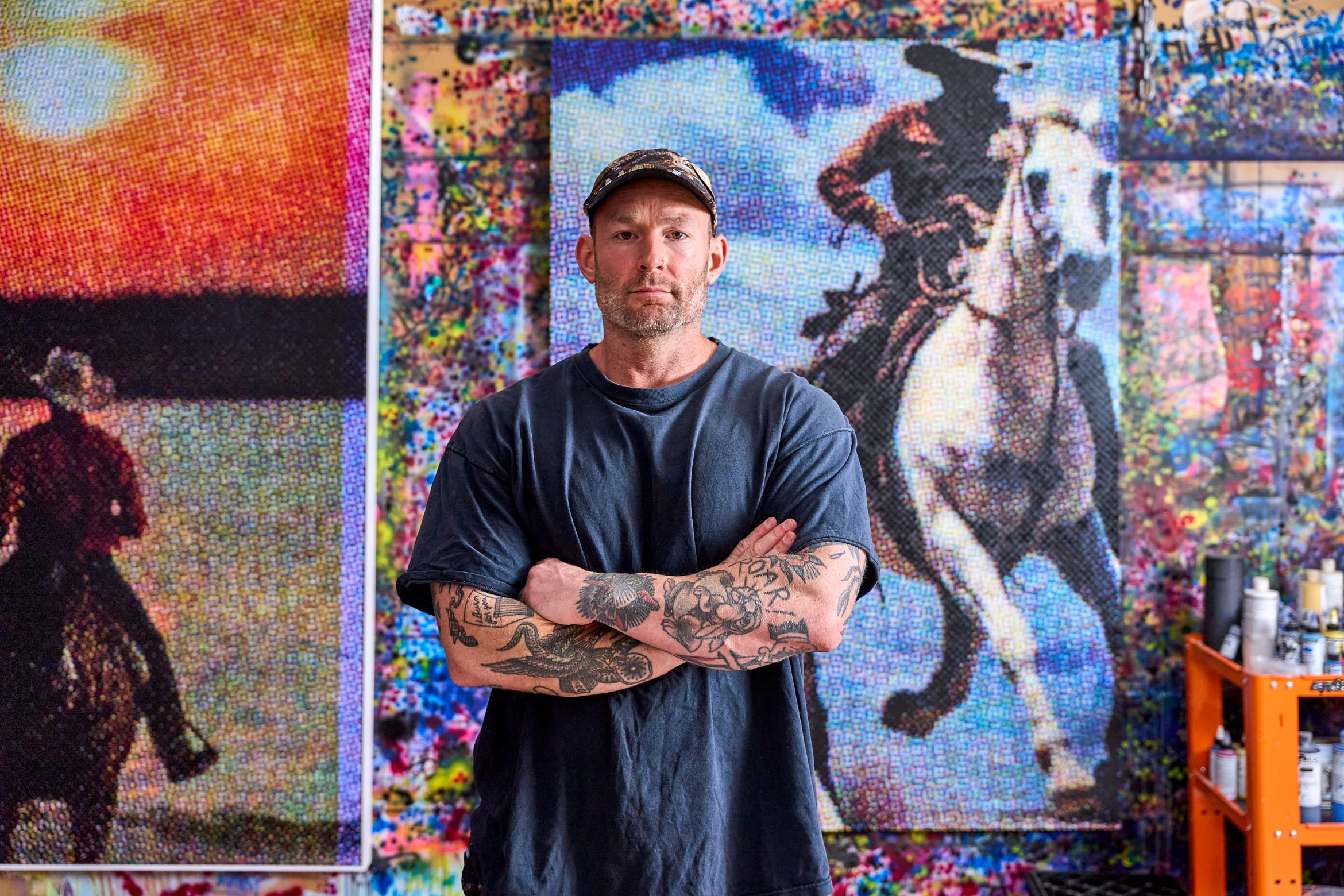It’s been seven years since Tom Adair last showed work in Melbourne. In that time, his practice has shifted in its focus, cities and scale. His latest exhibition, Imagine (Cowboys), opens on 31st July and runs until 29th August 2025 at Thought Forms Gallery, his newly redeveloped space in Richmond.
Thinking back, it was eight years ago when the revered artists debuted his inaugural exhibition at the Metro Gallery Melbourne. The exhibit sold out before it opened, which to most would give the impression of success pertaining directly to the testament of the art itself – apart from Adair. “When I first transitioned into art full-time, I knew very little about it. And if I’m honest, I knew even less about what it meant to make art that had something to say. I wasn’t formally trained. I didn’t come through the academic institutions. I just started painting. In those early years, I felt the weight of that gap. I carried a fair amount of imposter syndrome. I found myself surrounded by artists, dealers, gallerists and collectors who all spoke a language I hadn’t yet learned,” shares Adair.
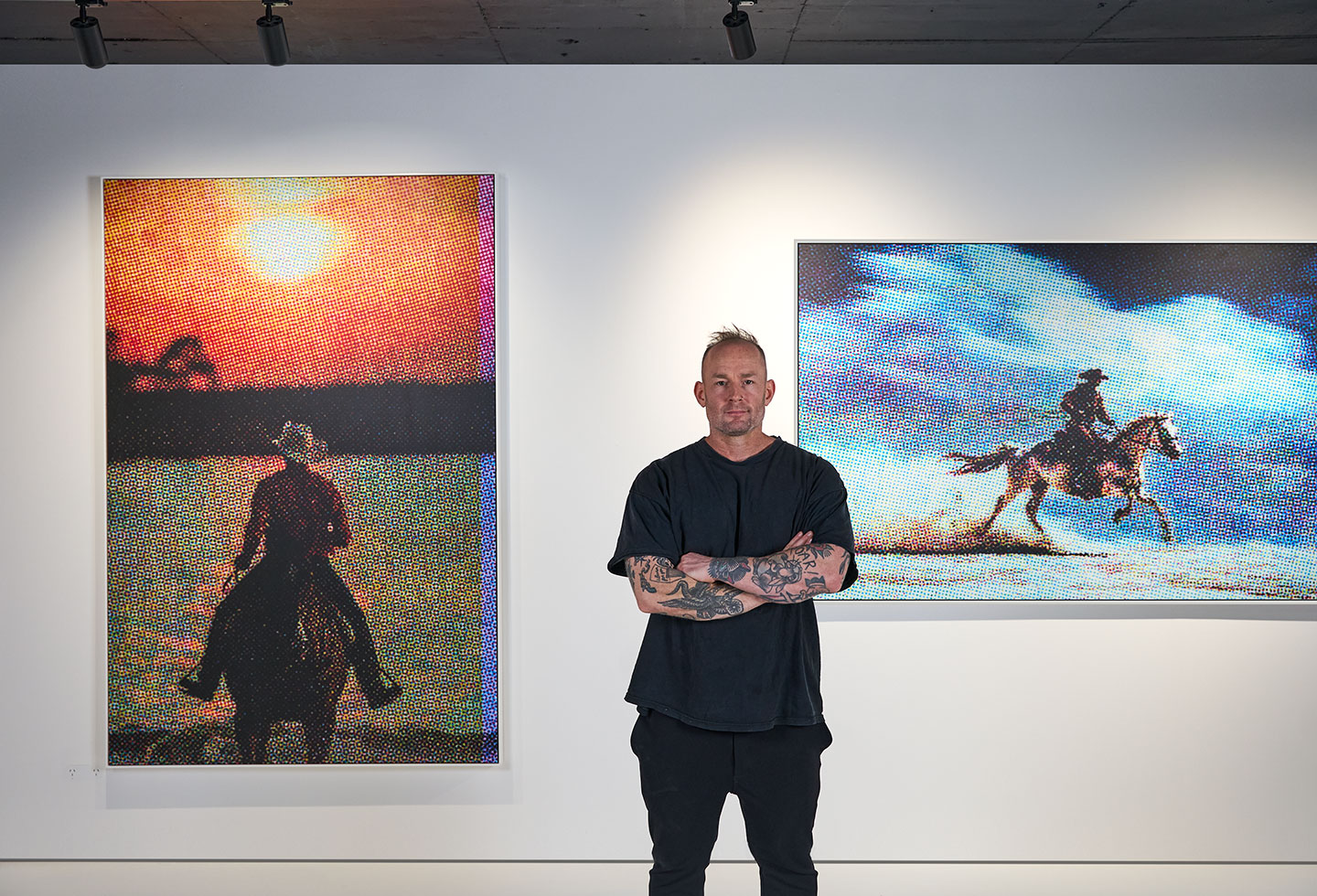
Departing from the Jardan design team, the conversion “felt risky,” Adair recalls, but was simply a call that artists could not ignore. Since that point, Adair has amassed an oeuvre of exhibits worldwide, with built representation in Los Angeles, Phoenix and Philadelphia, which opened the door to showcase at art fairs across the U.S., including Miami Art Basel week. “In that sense, my career moved outward before it circled back home. I’ve been based in Melbourne for the last seven years, quietly working away in my Richmond studio, but most of my formative opportunities have happened away from my here. That’s partly why this exhibition here now feels so important, it’s a kind of return,” says Adair.
“A couple of years in, I made a decision that changed everything. I reached out to a well-known, notoriously ruthless art critic and asked him to critique my work. We did four sessions. They were intense, raw and confronting. I left each one of them overwhelmed and questioning myself and my work, but it was the best thing I’ve ever done for my practice.”
Always humble, it seems fitting that Adair would turn to the perception of cowboys – who notoriously are also generically grounded. Informed by Richard Prince’s rephotographed Marlboro men and mediated through generative AI, Adair’s cowboy – once a symbol of control – appears here as fragmented and estranged, now representing refracted characters; no longer archetypes of control, but confused figures caught in an image loop, which he then reinterprets through his signature airbrushed technique. The result is a collection of paintings that emulate the appearance of digital output while foregrounding its failure points: irregular shadows, duplicated limbs and structural anomalies.
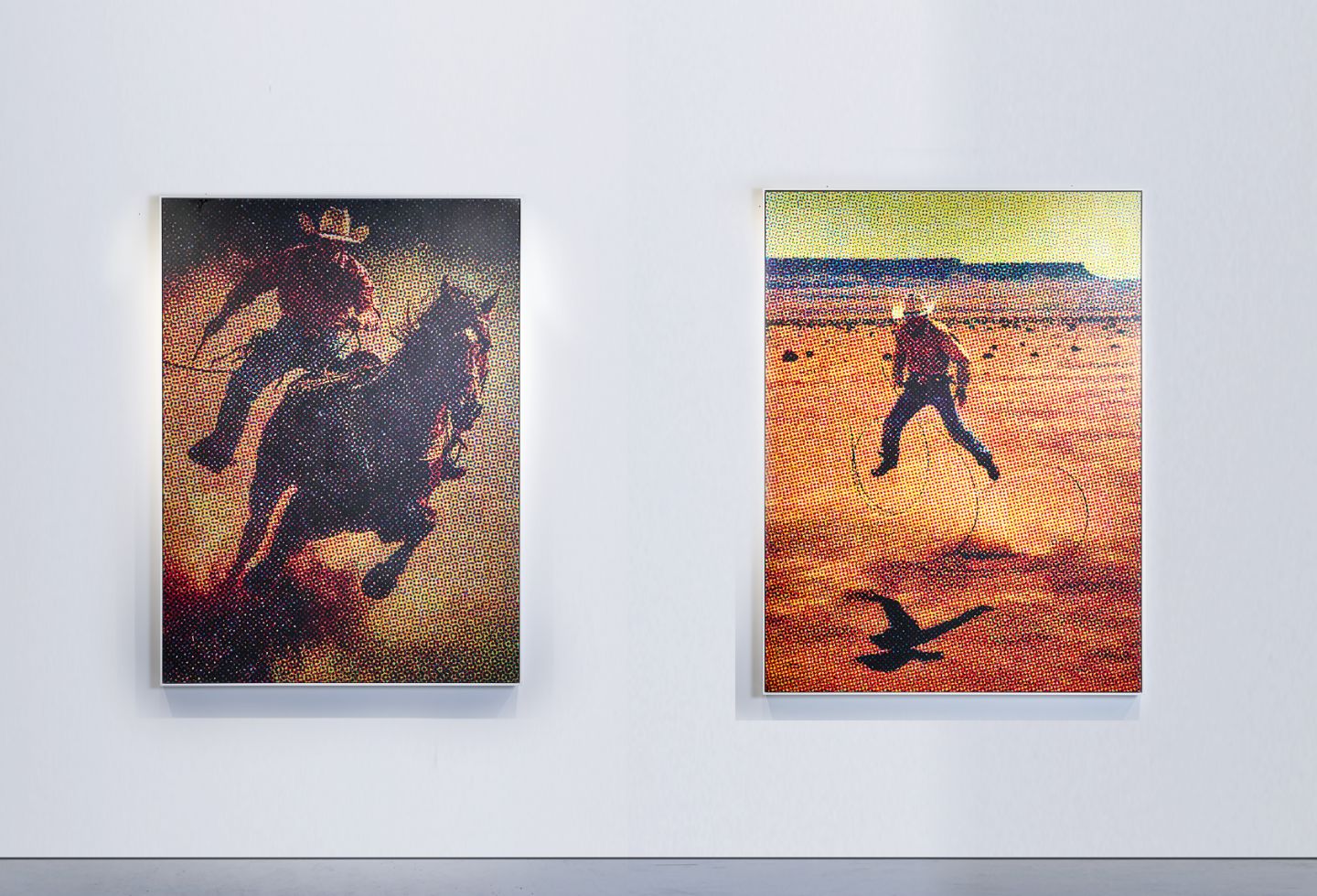
“For me, these distortions say a lot about image construction, and especially about agency. In the Marlboro campaigns, the image was built for control. Masculinity was staged, certainty was projected. Every detail was intentional, but when you input that myth into a machine, it collapses under its own weight. The AI reassembles the fantasy incorrectly, filling in the gaps with hallucination,” notes Adair.
The artworks “straddle the uncanny valley, and when you get closer, they begin to unravel. The proportions are off. The faces are vacant. The figure feels disconnected from the scene. You realise what you’re looking at isn’t a photograph or a memory, but a construct and a fragile illusion. What remains is just the scaffolding of the image. The distortions become a metaphor. They speak to the collapse of authorship, the fragility of identity and the instability of visual truth. That floating cowboy is suspended not just in space, but between forces: between authorship and automation, between the artist and the algorithm, between myth and reality.”
Related: Cerith Wyn Evans at the MCA
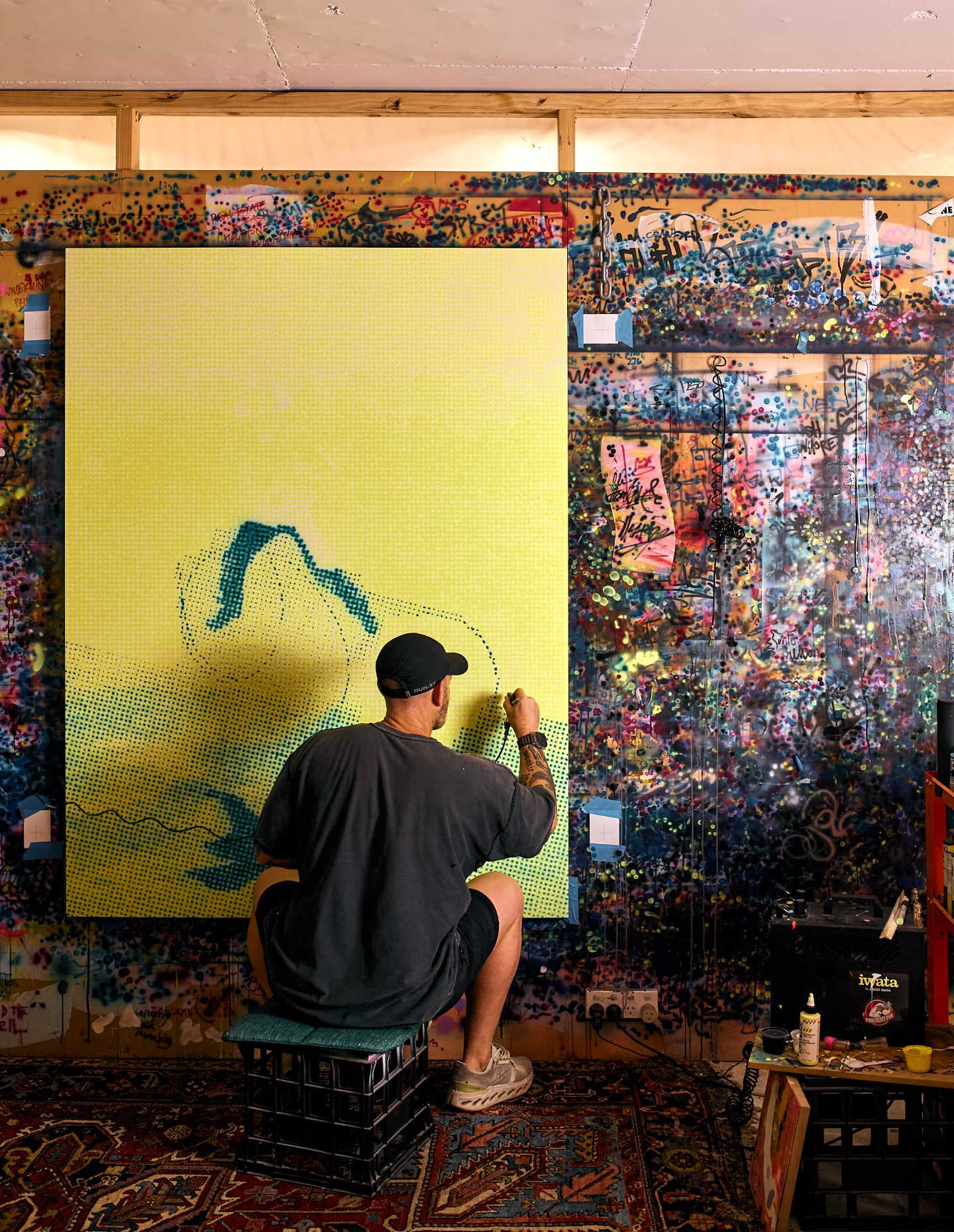
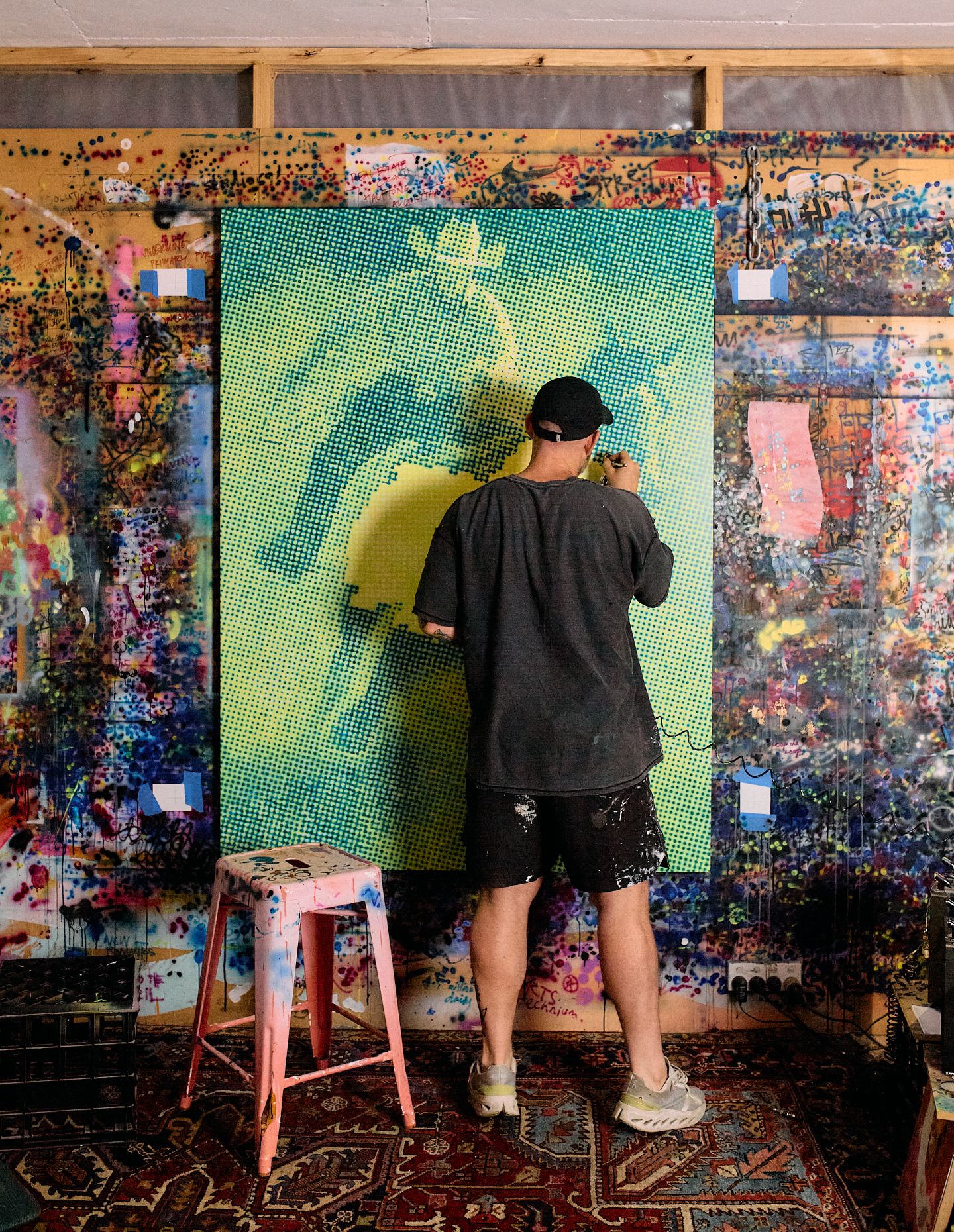
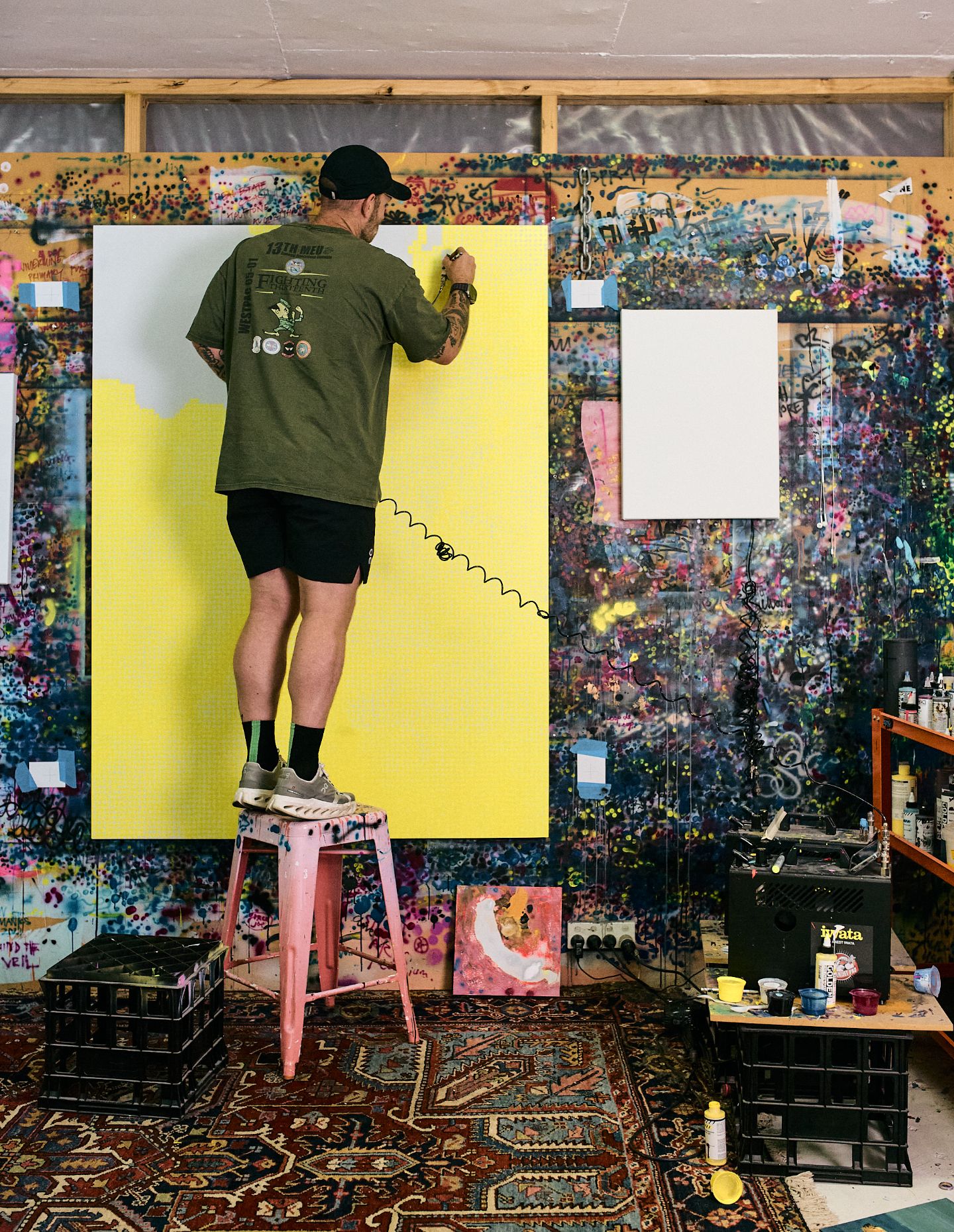
In one work, the rider floats slightly above the horse. In another, he faces backwards while moving forward. These gestures point to broader questions about agency, technology and image construction. “Technology hasn’t just disrupted representation, it’s diluted it. We now live in a time where identity and authorship can be generated, borrowed or hallucinated by machines. The image no longer needs a subject or a photographer, just a prompt. That’s a pretty wild shift when you think about what representation once meant in art,” Adair notes.
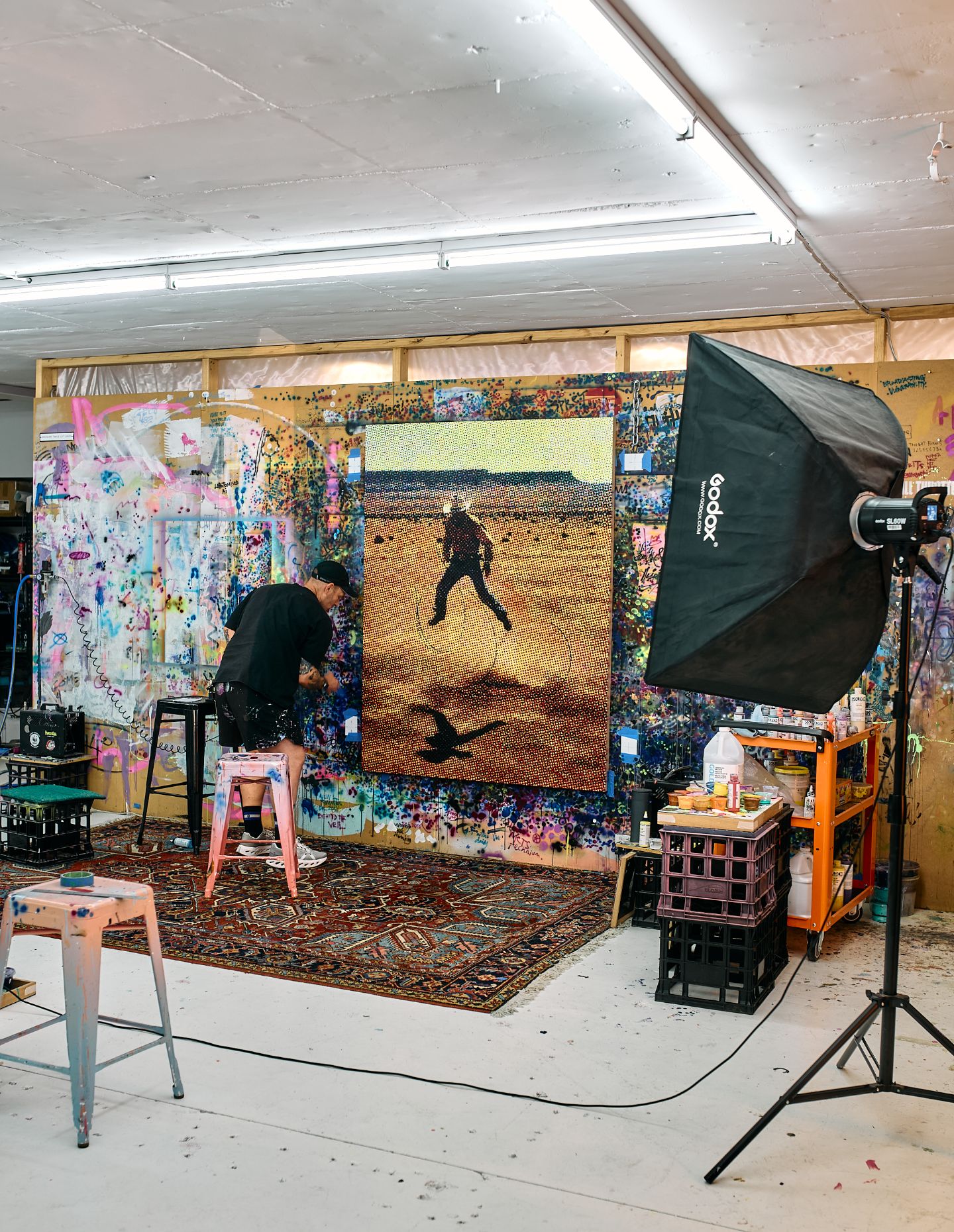
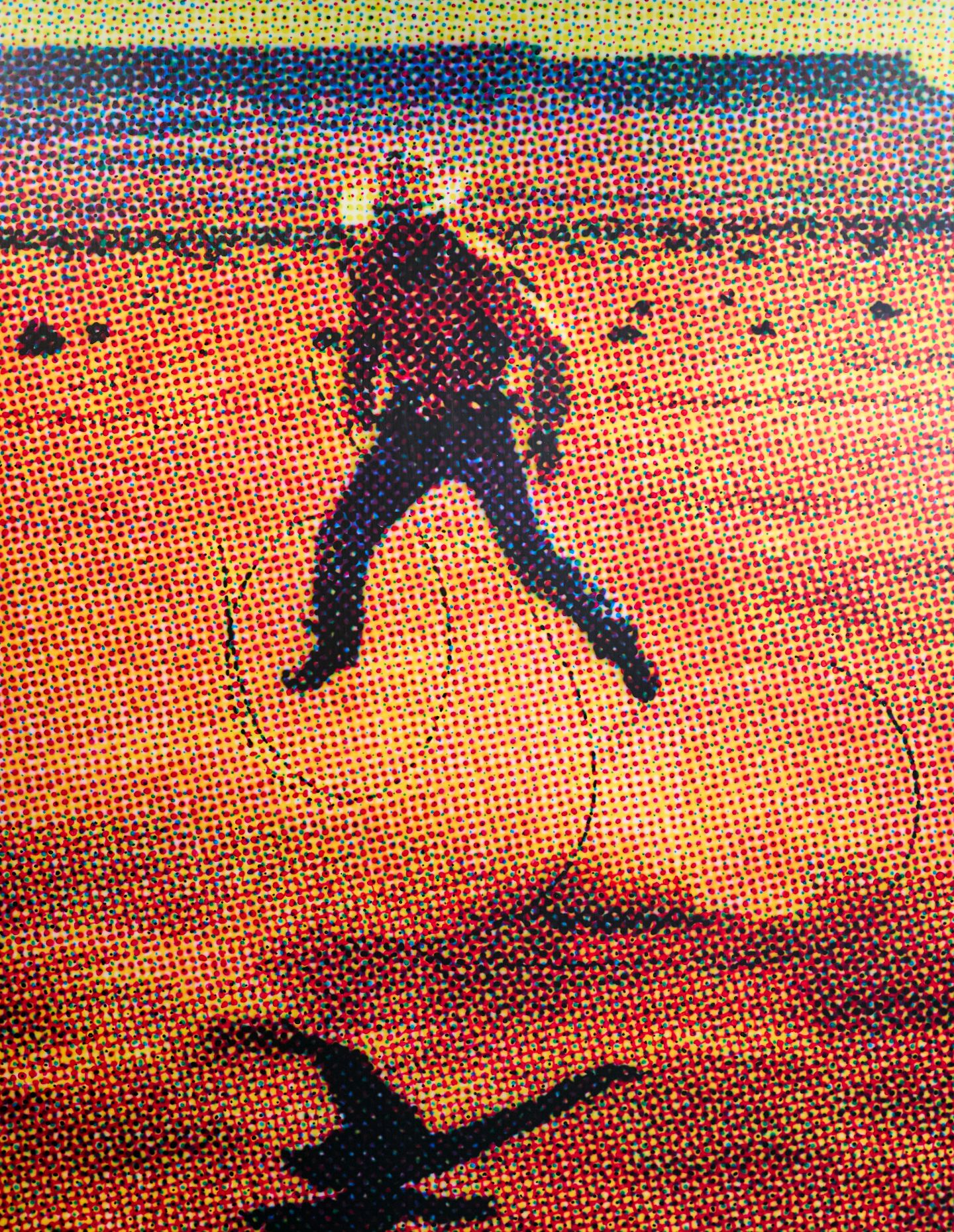
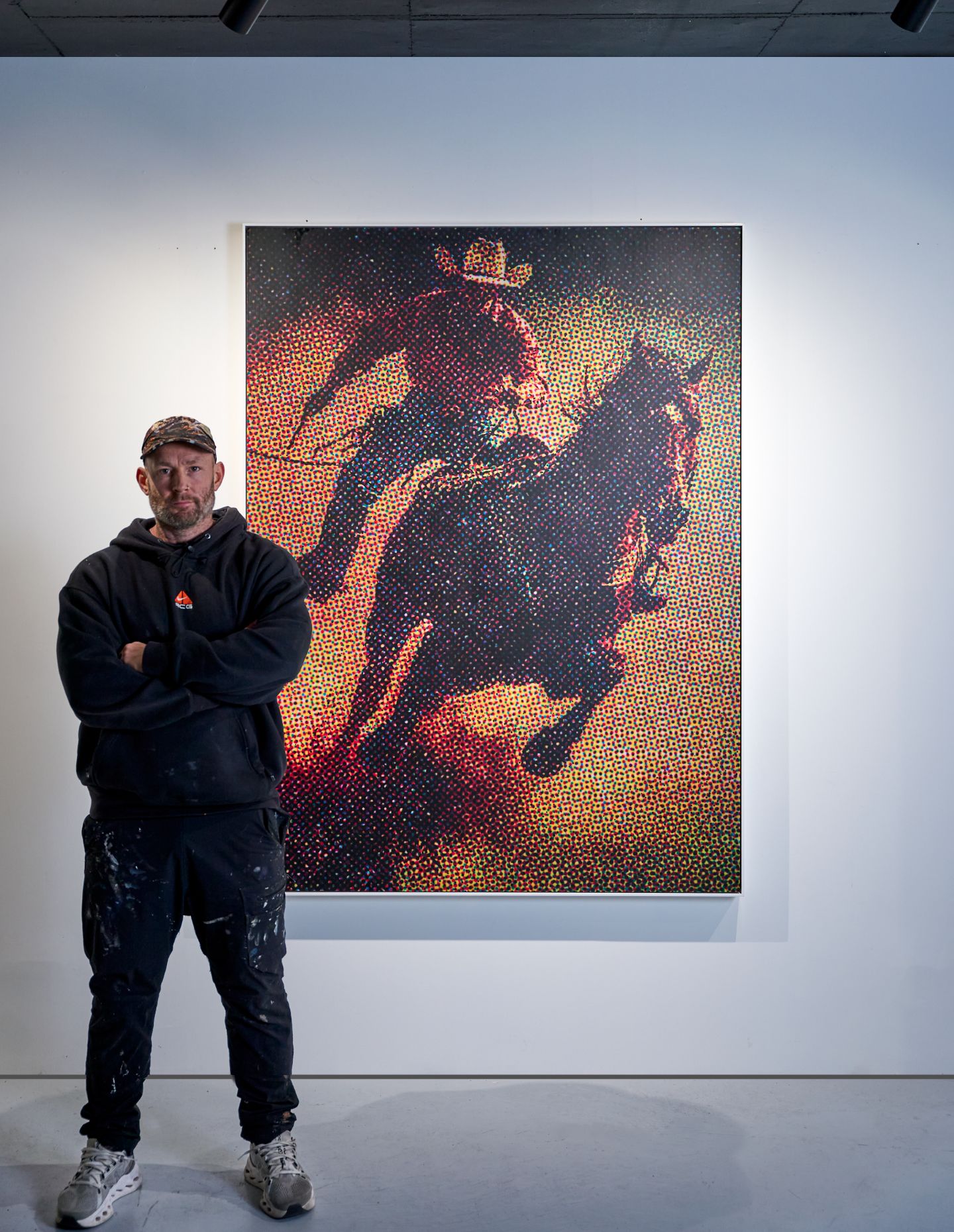
“My work engages with these technologies not because I’m trying to be futuristic, but because I’m trying to hold up a mirror to what’s happening now, to what I’ve observed has already changed. We’re surrounded by perfectly composed, perfectly fake imagery. It looks convincing and it’s often beautiful, but behind it there’s less and less human trace.”
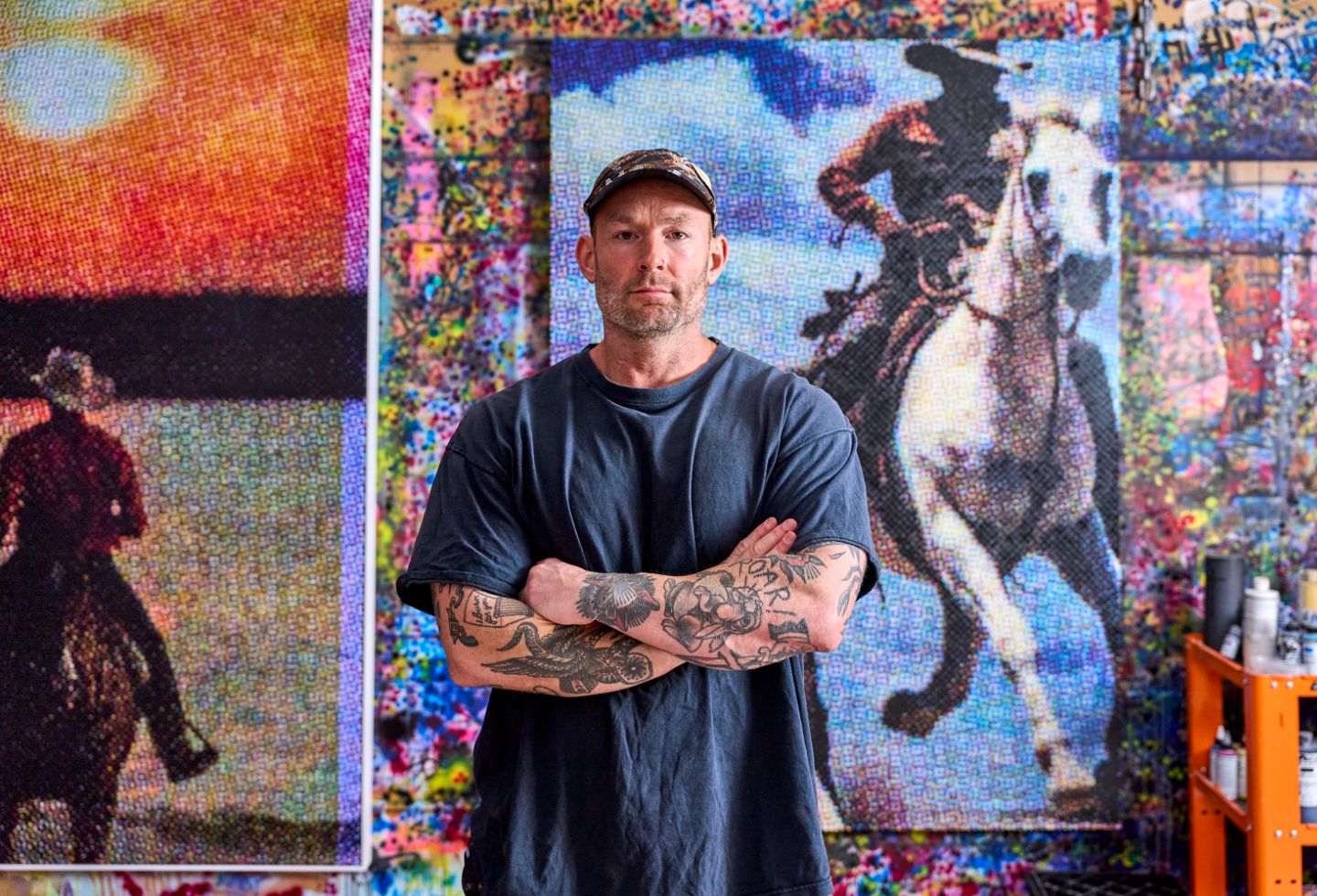
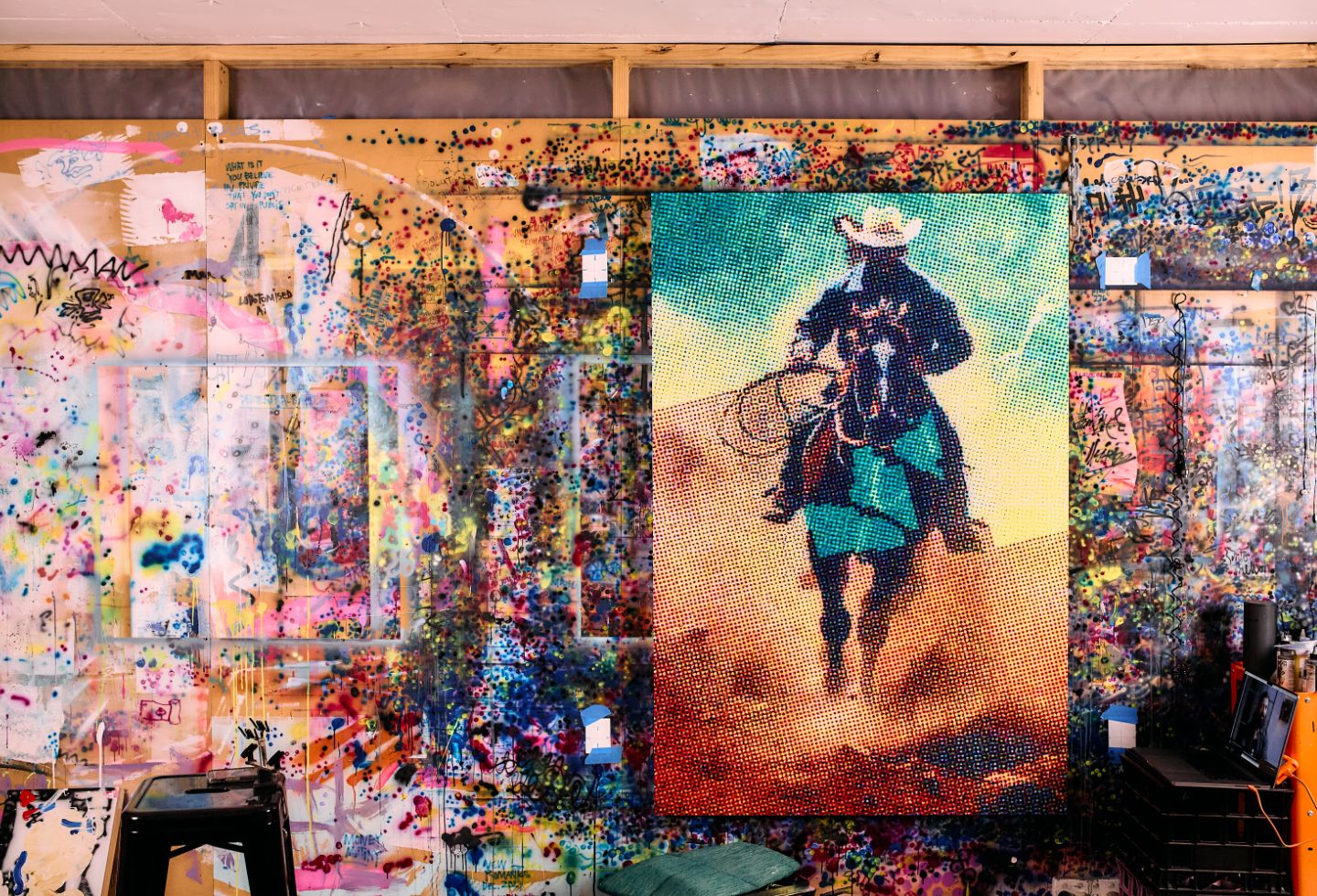
“Technology isn’t just a tool anymore. It’s a collaborator, an intruder, a mirror. And as artists, I think we have a responsibility to observe these shifts and reflect them back into the culture,” Adair concludes. “That’s what makes being an artist so meaningful to me, having the time and space to pay attention, listen and respond.” Recalling a significant moment and words spoken by the late fellow artist and close friend of Adair’s, Dion Horstmans, he notes: “It’s a privileged life to live the life of an artist.” They are words Adair recalls to have “never forgotten.”
